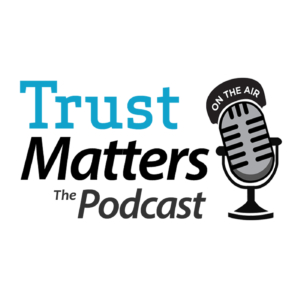A lot of time is wasted debating the relative merits of “hard” and “soft” skills. The right response is almost always “both,” and “it depends.” I want to focus here on the “both” part.
There is a growing belief – particularly in tech and in consultative professions (and everything is becoming both tech and consultative) – that we should approach the ‘soft’ stuff in ‘hard’ terms, i.e. through metrics, short-term goals, competency models and the like.
Treating ‘soft’ skills this way completely disintegrates them. You can’t have both if you’ve turned one into the other.
Case in point: dealing with resentments in the business world.
You Might Be Copping a Resentment If…
You may not think you’re a resentful person. And maybe, graded on a curve, you’re not.
But how often do you find yourself muttering at the driver who cut you off; re-litigating arguments in your head, where you win this time; waking up in the middle of the night pre-occupied with your checking account; and gossiping with someone about how so-and-so really isn’t all that?
All those are versions of wishing you could change reality – when you can’t. And that’s pretty much resentment.
It’s the difference between hoping and wishing. Hoping things will change is fine, particularly if you’re doing something to help the change. But wishing that things were other than they are – that’s living in an alternative universe. That’s resentment. It’s fine to hope you win the lottery—as long as you bought a ticket. But wishing you’d won last week’s lottery – that’s resentment.
By living in an alternative universe, you’re playing at being God. (Unless, worse yet, you think it’s not play, and you actually believe that all your wishing makes a dime’s worth of difference to Reality). Well, hear this: there is a God – and you’re not it.
Resentment tends to eventually manifest as resentment against other people. But personal resentment is like taking poison and waiting for the other person to die. All it does is eat you up from inside, while the Resented One is either blissfully unaware, or at least generally doesn’t give much of a damn.
Why Resentment Kills Sales and Influence
This is not afternoon TV psycho-babble. It makes a daily difference in business – a huge difference.
If you are prone to the Black Art of Resentment, then you are likely to believe in short cuts, quick fixes, fad diets, new interpersonal techniques, flashy methodologies, and come-on lines for dating bars – because all those gimmicks appeal to your desire to live in a world other than this one: one in which you can dominate, control, bend the other’s will to your desire. And when they let you down – and they do, and they will – you will once again feel your Old Friend Resentment (or its kissing cousin, self-pity).
People don’t buy from those who are trying to change them. People don’t pay attention to people who are trying to persuade them. People don’t take advice from those whose egos are tied up in having their advice taken. (Interestingly, people of both genders also don’t like to date people who are needy; they prefer people who appear independently self-contained).
We interpret all those things as attempts to manipulate, and we shun the manipulator. This is not a good thing.
It also has serious business consequences. It makes for salespeople who can’t sell; advisers whose advice isn’t taken; and relationship managers that people don’t relate to. The absence of soft skills has dramatically hard results.
The Best Way to Sell and Influence
The best way to sell and influence is to get rid of resentment; to get rid of living in alternative universes; to accept everything, starting with the customer in front of you.
Acceptance in this case means taking them at face value, getting to know them on their terms, giving up all attachment to your outcome (because that’s about you, not them) – and applying your focus, energy and attention to simply helping them. Let’s call that, for lack of a better term, empathetic client focus.
If you do that, and spend your time and energy seeking to understand them, you’ll do a far better job of connecting with them than all the other resentment-fueled alternate-universe salespeople and advisors.
One result of which is – you’ll end up selling more and having your advice taken more often.
Is that a paradox? Definitely. But it’s life. People buy from those who don’t try to sell them. People listen to those who listen to them, not those who talk. The best way to sell it to stop selling. The best way to influence is to shut up.
Training to Get Rid of Resentments
You do not get rid of resentments by examining best practices. You don’t banish resentments by designing a training program based on four levels of resentment-coping skills, with behavioral metrics indicating competencies at successive levels.
Instead, you get rid of resentments by doing a Jedi mind trick; an emotional/spiritual jiu jitsu flip; a Paul-on-the-road-to-Damascus conversion. You have to come to believe that you are not God – and that all your resentments are nothing more than an attempt to claim otherwise, doomed to fail because your whole approach is selfishly based on You trying to dominate Them. It doesn’t work. They push back.
In practical terms, the solution is not the usual ‘act your way into right thinking.’ Instead, this new perspective comes about through conversations with others; through reflection; through role-playing; and through discussion with others about shared experiences. This is a different approach to corporate training – but a necessary one for certain advanced ‘soft’ skills.
Goals are Great, but An Expectation is a Pre-meditated Resentment
Goals are great. So are objectives and milestones and targets. They give you a sense of what you’re aiming for, and help you envision the to-be state.
But don’t confuse goals with their purpose. The purpose of a goal is not to achieve the goal – the purpose of a goal is to help you achieve your True Purpose. You should never confuse a quarterly sales quota with a Purpose.
It’s when goals get transmuted into expectations that we confuse goals with purpose. When we start living in that alternative universe defined by the goals, when we start obsessing over the new car, winning the contest, getting the boss’s approval, ranking in the top 20% on the bonus plan – that’s when we begin to have expectations. And an expectation is a pre-meditated resentment.
Think. Do. Accept. Rinse and repeat.
Plan, set goals, and strive. Then celebrate what you get; because to bemoan what you haven’t got is to live in resentment. A life spent wishing you were other than you are is a failed attempt at playing God, and a recipe for unhappiness – and for poor sales and unheeded advice.


 What do you do when your client gets angry at you, upset with you, in your face?
What do you do when your client gets angry at you, upset with you, in your face?